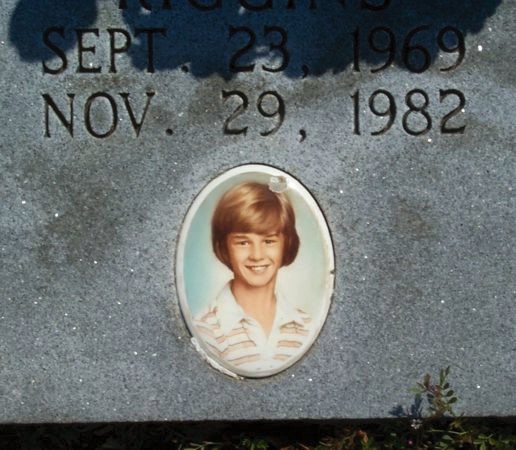
 I
imagine you’ve seen these before. I am not particularly
fond of porcelain for several reasons I’ll elaborate
on later. We experimented with porcelain for some time
before moving forward with the development of our high
resolution etching on stainless and titanium. We actually
got porcelain to adhere extremely well to titanium in the
lab.
I
imagine you’ve seen these before. I am not particularly
fond of porcelain for several reasons I’ll elaborate
on later. We experimented with porcelain for some time
before moving forward with the development of our high
resolution etching on stainless and titanium. We actually
got porcelain to adhere extremely well to titanium in the
lab.
As
you may know porcelain has been around for centuries. It
has been in use in China for over 4,000 years. The Chinese
probably made the first true porcelain during the Tang dynasty
(618-907). Transfer printing revolutionized the porcelain
industry in 1756. Recent advances in printing technology
now enable us to print decals from desk top printers using
what they call porcelain inks.
The Porcelain
Enamel Institute does a lot of research
on porcelain. Following are two excerpts from their Web
site.
“ IMPACT
RESISTANCE
Like
glass, porcelain enamel will fracture when abused. It is
difficult to predict the impact resistance of a specific
porcelain enamel since it depends as much or more on the
design of the part as on the properties of the porcelain
enamel.
WEATHER
RESISTANCE
 The
weatherability of porcelain enamel is usually measured
by the degree to which the coating retains its original
gloss and color. In general, acid resistant porcelain
enamels have better weather resistance than those that
are non-acid resistant. Thus, those porcelain enamels to
be exposed to weathering should be specified to have no
less than a Class A acid resistance rating.
The
weatherability of porcelain enamel is usually measured
by the degree to which the coating retains its original
gloss and color. In general, acid resistant porcelain
enamels have better weather resistance than those that
are non-acid resistant. Thus, those porcelain enamels to
be exposed to weathering should be specified to have no
less than a Class A acid resistance rating.
Glossy,
acid resistant porcelain enamels have shown no appreciable
change in appearance after 15 years exposure. However, similar
exposure may substantially change the appearance of some
matte and non-acid resistant porcelain enamels. Some types
of highly pigmented red and yellow
porcelain enamels may
show some fading after several years of weathering.”
Several
cemetery managers mentioned to me that they noticed some
of the porcelain tributes fading. This may be due in part
to the chemistry now used in the inks developed for the transfers.
Also EPA regulations have come into play. Cobalt and cadmium,
used as pigments, are considered neurotoxins that can damage
the liver and kidneys. Some of the strong inorganic oxides
that gave original porcelain its permanence now are becoming
off limits because of disposal regulations or air contamination
during use. Old porcelain didn’t fade. Apparently the
newer items do.
Personally,
I feel a full color image, essentially a color photograph,
is tacky when mounted to a fine stone or bronze memorial.
In addition, porcelain does
break. The photo below shows chips in the
tribute made by rocks or other flying debris. If you dropped
a brick on a porcelain tribute manufactured using a thin
gauge substrate and a brick on a Diamond Memory™ there
would be different consequences. The porcelain would be severely
compromised. The Diamond Memory™ may end up with a
small dent.
The
other thing you must be careful about when purchasing a porcelain
tribute is the metal on which the porcelain is fired. Some
dealers use high carbon steel. If the porcelain gets chipped
the steel underneath will begin to rust. That rust can continue
unabated under the porcelain on the back side of the metal
until all that’s
left is a porcelain shell - like an egg. I’ve heard
that some manufacturers use stainless as a base metal. If
you
buy one of these tributes, make sure what type of metal
and its gauge is being used. We use .060 316L stainless.
To
keep them from chipping you can purchase a separate cover
arrangement, like a little door. I think that defeats the
intention. Not many people are going to open the door to
look at the photo.
The
other area of concern is the mounting. Some porcelain tributes
come with an epoxy tape. The tribute is simply stuck to the
stone. In some cases cemeteries don’t use the tape
and affix the tribute with epoxy paste. Either way it's a
surface mount, which in time, due to expansion and contraction
coefficients, and potential microbial attack and UV degradation
along the edges, will lose adhesion and fall off. Who is
going to put it back on? This is not as much of a problem
if the tribute is mounted horizontally
on a flush bronze or stone memorial. Attachment methodology
is something to consider when thinking far into the future.

Chipped by rocks thrown by lawnmower.
MEMORIAL
/ HEIRLOOM TRIBUTES
The
techniques used to produce porcelain items these days must be
taken into consideration. Many porcelain dealers
offer memorial tributes, heirloom plates and jewelry. These
are very nice and make a great addition to the home. When
we talk about extreme longevity, breakage and other circumstances
must be taken into consideration. Are the images reproduced
using transfer decals? If decals are used, are they considered
no fire or low fire. Following is some
points to consider.
"ART
186 – Intro To Ceramics
Glendale Community College, 1500 North Verdugo Road, Glendale,
California 91208
Steps in the ceramic process
(Section relating to low temperature ceramic decals)
OVERGLAZE FIRING
Sometimes,
potters choose to do additional firings to achiever color
and surface effects not possible in the glaze firing.
These effects include lusters, china paints and decals.
These overglaze techniques are fired at extremely low temperature
(1300 degrees F.) and because of that, brighter colors and
lusters are possible than can be achieved at 2350 degrees F.
These are, loosely speaking, very low fire glazes that
are melted atop the previously fired high temperature glaze.
At
this low temperature, the underlying glaze does not even melt,
instead the luster, china paint, or decal melt onto
the glaze and fuse, semi-permanently.
This is the major
disadvantage of this technique. The
overglazes are not
as permanent as high
temperature glazes. Abrasion will erode
this coating, and eventually, the overglaze will be gone or
muted by time. Still, unusual
and exotic effects are possible, and for this reason, potters
are interested in this area. Some techniques, like china painting,
often involve multiple overglaze firings, layering one color
on top of another as complicated designs emerge."
Due
to advances in recent technology, photographic, high resolution
images on porcelain and ceramic pieces are probably produced
using transfer decals. Some transfer decals are no fire.
They are transferred and oven baked at 300 degrees Fahrenheit.
Their
durability
is limited based on usage. Then you have the low fire decals
which are kiln fired at 1,300 to 1,540
degrees
Fahrenheit. If these pieces are kept inside and not broken
or exposed to severe abrasion or extreme UV, they should
last indefinitely.
I would not recommend no fire decal transfers
for outdoor use.
January
20, 2013: We are working on a ceramic on
metal option using low fire ceramic decals
that may possess extreme durability in outdoor environments.
Stay tuned for updates.